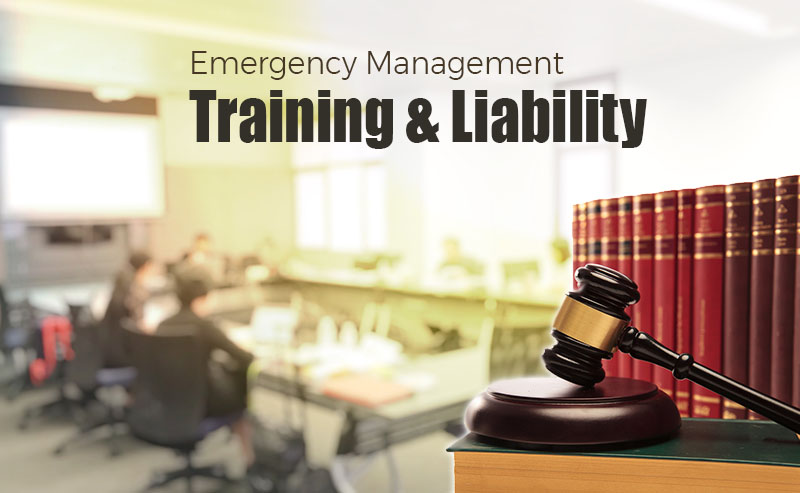| By Ed Wolff, MS, CEM, MEP |
Last week we addressed the overarching theme of creating a culture of preparedness. This week we’ll dive into the topic of training and liability. Training and liability go hand-in-hand for the first responders, first receivers, EM/COOP agencies and the private sector partners that support them. Like building a house, you must build a strong foundation, and training is the foundation for the public safety and emergency management community.
Why train?
I have heard time and time again the comment “we don’t need training,” or “it costs too much.” It is a fact that training has associated costs in the forms of time spent and course fees.
However, these “hard” costs must be weighted against other “soft” costs an agency might incur for not investing in training.
For example, if a person isn’t properly trained for their job, they can cause harm to themselves or others. This can lead to civil, and potentially even criminal, liability typically related to “negligence”. Negligence is commonly defined as a failure to use reasonable care, resulting in damage or injury to another. There is even the potential issue of “vicarious liability for negligent retention” if an employer retains an employee that is not properly qualified, trained or certified to do the job that they are performing.
These potentially significant and detrimental “soft” costs all add up to good reasons to train.
The Standards
Based upon your position, have you completed industry accepted or “standard” training? Have you attained certification to validate that training?
NFPA 1600, the standard on Disaster/Emergency Management, provides guidance. So does the National Incident Management System (NIMS), the Emergency Management Accreditation Program (EMAP) and the International Association of Emergency Managers (IAEM). State agencies and private organizations may also establish certain accepted standards. Your training and actions may be viewed against these types of “standards of practice”.
Resources
Two outstanding resources that you have available for validated training is the Federal Emergency Management Agency’s (FEMA) flagship facility, the Emergency Management Institute (EMI). EMI is world-renowned for providing the highest caliber of training within the emergency management community, providing current, relevant and validated training and certifications.
Your state EM Training Officer is another outstanding resource to call upon for training and state-oriented certifications.
Sure training costs time and money. But which is really more expensive: a training course, a civil lawsuit, a criminal indictment and/or the loss of life and property?

Ed Wolff, MS, CEM, MEP
Vice President, Special Projects
BOLDplanning
Ed Wolff is Vice President, Special Projects for BOLDplanning, a leading provider of preparedness consulting services and online planning software.
Over the past 36 years in emergency management roles, Ed has worked many real-world boots on the ground incidents, including an earthquake and tsunami in Papua New Guinea, mud slides in South America, the World Trade Center in 2001, the Space Shuttle Columbia crash, Hurricane Katrina, and other hurricanes, tornadoes, mud slides, and flooding across five continents.






